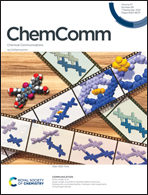Advancements in multifunctional manganese complexes for catalytic hydrogen transfer reactions
Abstract
Catalytic hydrogen transfer reactions have enormous academic and industrial applications for the production of diverse molecular scaffolds. Over the past few decades, precious late transition-metal catalysts were employed for these reactions. The early transition metals have recently gained much attention due to their lower cost, less toxicity, and overall sustainability. In this regard, manganese, which is the third most abundant transition metal in the Earth's crust, has emerged as a viable alternative. However, the key to the success of such manganese-based complexes lies in the multifunctional ligand design and choice of appropriate ancillary ligands, which helps them mimic and, even in some cases, supersede noble metals’ activities. The metal–ligand bifunctionality, achieved via deprotonation of the acidic C–H or N–H bonds, is one of the powerful strategies employed for this purpose. Alongside, the ligand hemilability in which a weakly chelating group tunes in between the coordinated and uncoordinated stages could effectively stabilize the reactive intermediates, thereby facilitating substrate activation and catalysis. Redox non-innocent ligands acting as an electron sink, thereby helping the metal center in steps gaining or losing electrons, and non-classical metal–ligand cooperativity has also played a significant role in the ligand design for manganese catalysis. The strategies were not only employed for the chemoselective hydrogenation of different reducible functionalities but also for the C–X (X = C/N) coupling reactions via HT and downstream cascade processes. This article features multifunctional ligand-based manganese complexes, highlighting the importance of ligand design and choice of ancillary ligands for achieving the desired catalytic activity and selectivity for HT reactions. We have also discussed the detailed reaction pathways for metal complexes involving bifunctionality, hemilability, redox activity, and indirect metal–ligand cooperativity. The synthetic utilization of those complexes in different organic transformations has also been detailed.



 Please wait while we load your content...
Please wait while we load your content...